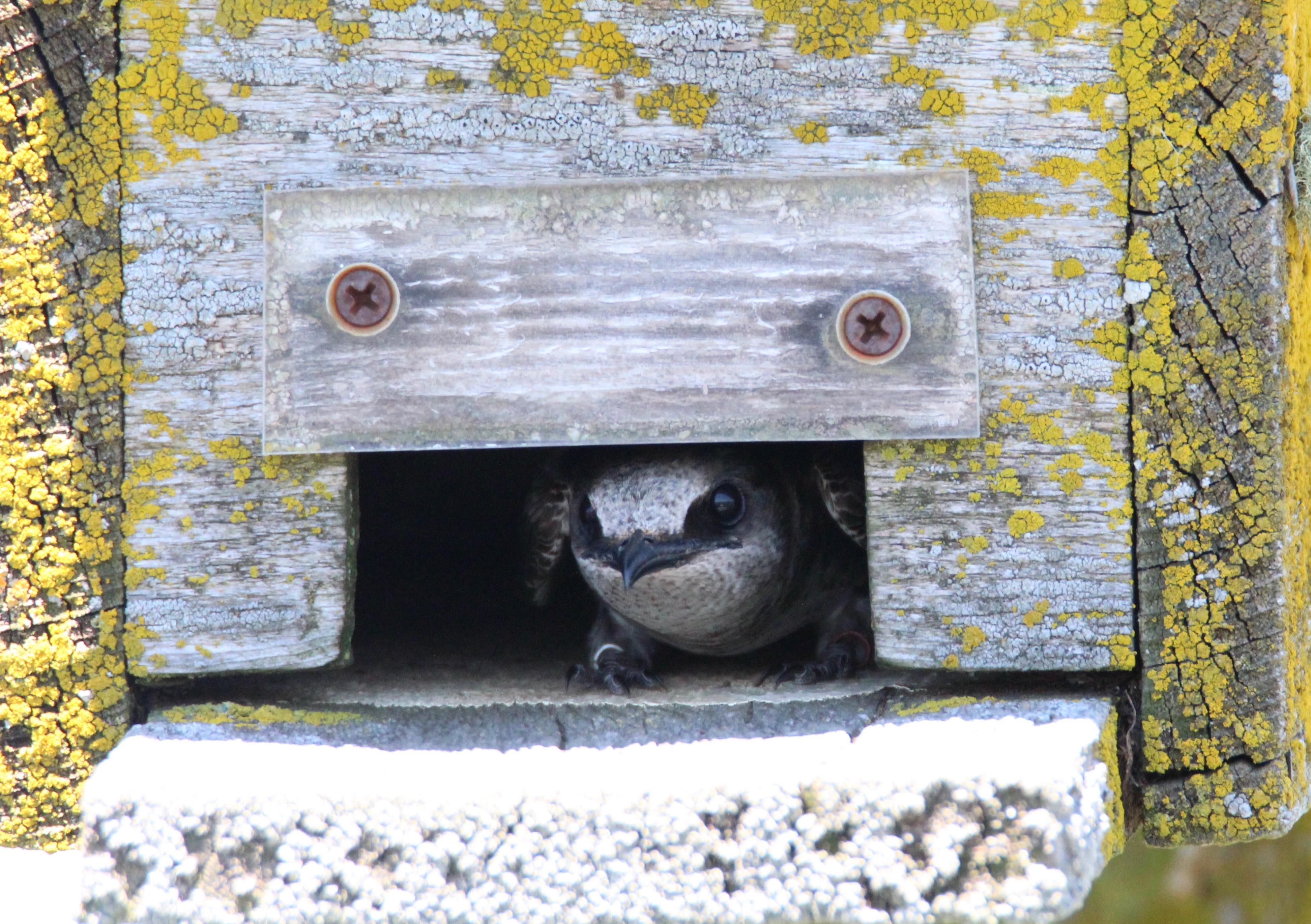PORTLAND, Ore. — An unladen purple martin swallow can reach the air-speed velocity of about 24 miles per hour, which may be important information if you’re trying to cross the ‘Bridge of Death’ as you search for the Holy Grail. It’s also probably impossible for that 1.7-ounce bird to carry a 1.2-kilogram coconut, even if he gripped it by the husk (we are checking with the engineering department though).
Lost? Don’t fret, you just need to watch more movies, or specifically, watch Monty Python and the Holy Grail. But the movie isn’t important, it’s just a gimmick to get you to focus on swallows. And more specifically, purple martin swallows.
This particular species of swallow is found in large numbers in eastern North America while the number of these birds west of the Rocky Mountains has declined in recent years. Even though the population is in decline, Fern Ridge Dam and Reservoir, as well as other Portland District projects, offers good purple martin nesting habitats according to Garrett Dorsey, Willamette Valley Project wildlife biologist.
“The Willamette Valley Project has the unique opportunity to provide nesting within large open areas through the use of a nest box program,” explained Dorsey. “We currently have three locations that have purple martin colonies: Cottage Grove, Dorena and Fern Ridge (dams and reservoirs).”
These project lands provide open skies for the birds to fly and see aerial predators; are located over water, which keeps land-based predators away; and provide abundant insect life for food. The Willamette Valley population is one of the largest in Oregon, making the Valley a great place to study the birds.
In fact, the Corps has partnerships with private citizens, non-profits, federal agencies and an Oregon State University researcher to study these birds. Lorelle Sherman, OSU Department of Forest Ecosystems and Society graduate research assistant, is studying the dispersal of purple martins up and down the West Coast.
“These birds are highly charismatic and fun to watch interact with each other and with other species” said Sherman. “They put on a great aerial show while feeding, too. I was drawn to this project because there are still major gaps in our knowledge of purple martin natural history.”
Sherman also said she loves the purple martin song so much, she made it her ringtone.
The Willamette Valley Project is one of the core members of the Western Purple Martin Working Group, an organization with a goal of measuring how many purple martins are in the west and increasing or maintaining their overall number.
Our next topic will somehow tie-in the Knights who say ‘Ni,’ unless a shrubbery is involved.
